Johnson 25 Outboard Bogs Down at High Speed? Diagnose & Fix Fuel Delivery Issues
- Understanding Johnson Outboard Engine Basics
- Common Causes of Johnson Outboard Bogging Down
- How to Diagnose Johnson Outboard Bogging Issues Step by Step
- Preventive Maintenance Tips to Avoid Bogging Issues
- When to Seek Professional Repair or Engine Rebuild
- Conclusion: Getting Your Johnson Outboard Running Smoothly Again
If you've ever been out on the water, feeling the thrill of open throttle, only to have your Johnson outboard sputter and bog down, you know how frustrating that can be. It's like hitting a brick wall when you're expecting smooth sailing. This problem often strikes when you need your outboard the most, typically at higher speeds or under significant load. It's a common ailment, and while it can feel daunting, understanding the usual suspects is the first step to getting back on the water with confidence.
The primary issue is usually a failure in the fuel delivery system, but it's not the only culprit. When your Johnson outboard bogs down at full throttle, it means the engine isn't receiving the correct mixture of fuel and air to sustain the high RPMs demanded. This can stem from a variety of issues, from a simple clogged fuel filter to more complex problems with the fuel pump or even the carburetor. Fortunately, most of these are diagnosable and fixable with a systematic approach.
In this guide, I'll walk you through the common causes of your Johnson outboard bogging down at full throttle and provide you with step-by-step diagnostic procedures. We'll dive into fuel delivery, ignition, carburetors, and the importance of regular maintenance. My aim is to empower you, whether you're a seasoned DIY mechanic or a weekend warrior looking to keep your rig running smoothly.
Here's what we'll cover to get your Johnson back to its best:
- Understanding the fundamental requirements for a 2-stroke outboard to run efficiently.
- Identifying the most frequent causes of bogging, from dirty carburetors to fuel line woes.
- A detailed, step-by-step diagnostic process to pinpoint the exact problem.
- Essential preventive maintenance tips to keep your Johnson running strong.
- Guidance on when it's best to call in the professionals.
Understanding Johnson Outboard Engine Basics
For any internal combustion engine, especially the reliable 2-stroke Johnson outboards, proper operation hinges on three critical elements: sufficient compression, a precisely timed spark, and an accurate fuel-air mixture. When your engine bogs down at full throttle, it's almost always one of these core functions that's failing to keep up with the demand.
Think of it like a runner trying to sprint: they need good lungs (compression), a strong heart (spark), and the right sustenance (fuel-air mix). If any of these falter, their performance tanks. For a 2-stroke outboard, this means the engine isn't generating enough power to overcome the load, leading to that disappointing bogging sensation.
According to the CDI Electronics Troubleshooting Guide, which is widely used across Johnson/Evinrude ignition systems, a healthy two-stroke engine should maintain specific parameters to perform correctly at high speeds. For most small Johnson outboards, compression readings should be above 90 PSI per cylinder, with variations between cylinders less than 10-15%. The fuel-air mixture must be precisely calibrated through properly functioning carburetors, especially at high demand when throttle plates are fully open.
Common Causes of Johnson Outboard Bogging Down
When my own Johnson 25 started acting up, bogging down when I really opened it up, I was naturally frustrated. It was a beautiful day, perfect for fishing, and suddenly I felt like I was dragging an anchor. After some digging, I realized it was a classic symptom of a fuel delivery issue, which is a super common problem on these engines. It's fascinating how many different things can go wrong with something as seemingly simple as getting gasoline to the cylinders.
Carburetor Issues
The carburetor is essentially the engine's "fuel mixer," and I've found it to be a frequent troublemaker. If the carburetor's float is stuck, or if the passages are clogged with varnish or debris, the engine simply won't get enough fuel at higher demand. It's like trying to drink through a straw with a kink in it – you only get a trickle.
I learned this firsthand while working on my neighbor's 1982 Johnson 25 HP outboard. The high-speed jet was completely clogged with varnish from old fuel, and no amount of throttle could get it to run properly at speed. Once we cleaned that jet and verified all passages were clear, the engine ran like new. For many of these older two-strokes, a professional carb rebuild is often the most reliable fix if you suspect carburetor faults, ensuring everything is precisely set. For parts or rebuild kits, you might consider checking available Johnson carburetor repair kits to help restore your engine’s carburetor to peak condition. You can also explore Johnson carburetor parts for OEM quality components.
Fouled or Faulty Spark Plugs
While fuel delivery is often the prime suspect, you can't discount the ignition system. I've learned firsthand that even a slightly fouled spark plug can dramatically reduce a 2-stroke's performance, especially under load. Carbon or oil buildup on the plug tip acts as an insulator, weakening the spark.
A correct fuel-to-oil mix ratio (typically 50:1 for most Johnson 2-strokes) is crucial for preventing excess oil from fouling your plugs, as specified in Johnson owner manuals. If your plugs look gunky, a good cleaning or a fresh set can often bring your engine back to life. The CDI Electronics Troubleshooting Guide recommends inspecting for cracked insulators, incorrect gap settings, or carbon tracking that can cause misfires at high RPM.
Fuel Supply Problems
This category is a really big one, and honestly, where I usually start my troubleshooting. Issues with the fuel lines are incredibly common. A small crack, a loose clamp, or even a failing primer bulb can allow air into the system. This air, rather than gasoline, gets drawn into the fuel pump. As one expert, Frank Sargeant, put it, "Any air leak—from quick-connect fittings, cracked primer bulbs, or loose clamps—lets the fuel pump pull air instead of fuel. The symptom is classic: runs on the trailer, bogs at WOT under load." Saltwater Sportsman
The anti-siphon valve, often located at the fuel tank, can also malfunction, restricting fuel flow much like a clogged artery. Don S. Casey, a renowned boat maintenance author, warns: "Don't overlook the tank vent and anti-siphon valve. A stuck anti-siphon or blocked vent will let you idle but starve at speed; you'll often see the primer bulb collapse." Sail Magazine
Of course, using fresh, clean fuel is non-negotiable; stale gas is just asking for trouble. Nigel Calder, a leading marine systems author, points out that "Ethanol fuel swells hoses and sheds debris that plugs filters and carb circuits. If the engine bogs after a fresh fill, suspect phase-separated fuel or loosened tank crud—start with a new water-separating filter and inspect the pickup screen." Passage Maker You can find quality fuel filters and water separators by browsing the fuel filter collection at JLM Marine.
Low Compression in Cylinders
This is a more serious mechanical issue, but it's crucial to rule out. If your cylinders are losing compression, the engine simply can't produce sufficient power. A compression test, which I'll detail later, is your best friend here.
Generally, if your compression readings are below 90 psi, or if there's a significant difference between cylinders, you might be looking at worn piston rings, a damaged head gasket, or even issues with the reed valves. Low compression really cripples an engine's ability to perform. Joe Reeves, a retired OMC master tech, highlights this, stating, "On OMC two-strokes, weak crankcase pulse from low compression will cripple the mechanical fuel pump. If you're seeing less than about 90 PSI and a big spread between cylinders, fix compression before chasing fuel." Marine Engine Forum
Overloading and Maintenance
It sounds obvious, but I've seen people push their engines beyond their limits. An excessively loaded boat or dragging wakeboards when your Johnson 25 is meant for trolling can lead to the engine simply not having enough power.
Beyond overloading, a lack of regular maintenance is a recipe for disaster. Skipping those scheduled checks means small issues can escalate into significant problems, like fuel starvation or ignition failures. The Johnson Outboard Service Manual recommends specific maintenance intervals: every 100 hours or annually for fuel system inspection, filter replacement, and carburetor adjustment verification. A good maintenance schedule is your insurance policy against these headaches. Comprehensive maintenance guidance can be found in videos like the Johnson Outboard Fuel System maintenance tutorial.
How to Diagnose Johnson Outboard Bogging Issues Step by Step
When my Johnson needed attention, I found that a methodical approach was key. Trying to guess the problem is a waste of time and money. Instead, I've found it incredibly effective to start with the most common issues and work my way through them. The goal is to isolate the problem systematically.
As Ed Sherman, an ABYC master technician, advises, "If squeezing the bulb doesn't help at speed, tee in a clear line to the carb inlet. Bubbles indicate an air leak ahead of the pump; a steady stream that dwindles at WOT points to a restricted pickup, vent, or anti-siphon." BoatUS This quote really emphasizes the importance of visual checks in the fuel system.
Test Fuel System with Portable Tank
This is my go-to first step for fuel delivery issues. It's a fantastic way to rule out problems in your boat's built-in fuel tank, fuel lines, and sending unit. Grab a clean portable tank, fill it with fresh fuel, and connect a known-good primer bulb and fuel line assembly directly to the outboard's fuel intake.
If the engine runs strong with this setup, you know the problem lies somewhere between your main tank and the engine. This process might also guide you to check and possibly replace your anti-siphon valve and any inline fuel filters.
I once had a persistent bogging issue with my Johnson that drove me crazy for weeks. When I finally tried a fresh portable tank with new lines, the problem vanished instantly. Turned out my main tank's pickup screen was partially clogged with debris, allowing enough fuel for idle but starving the engine at full throttle. For fuel system parts, you can find Johnson fuel pumps and fuel pump kits to ensure your fuel induction is operating flawlessly.
Perform Compression Test
This test tells you about the mechanical health of your engine's cylinders. You'll need a reliable compression gauge.
- Preparation: Ensure your engine is warm. Remove all spark plugs.
- Test Each Cylinder: Thread the compression gauge into one spark plug hole. Crank the engine over for about 5-7 seconds. Note the pressure reading.
- Repeat: Do this for all cylinders.
- Interpretation: Ideally, you want readings above 90 psi for most small outboards. More importantly, the readings between cylinders should be within 10-15% of each other. Significantly low or uneven readings can indicate issues like worn piston rings, leaking valves, or a blown head gasket. As expert Joe Reeves advised, low compression can cripple the fuel pump, so it's vital to address this first if identified. Marine Engine Forum
The Johnson Service Manual specifies that compression readings below 90 PSI indicate potential mechanical issues requiring further investigation. In my experience testing a friend's 1988 Johnson 25, we found one cylinder at 110 PSI and another at just 75 PSI. This 35 PSI difference (over 30% variation) explained why his outboard wouldn't hold plane—the mechanical imbalance was starving his fuel pump of proper crankcase pulse. After cylinder work, both his compression and fuel delivery issues were resolved. For more Johnson maintenance tips, the JLM Marine homepage offers a wealth of resources.
Conduct Spark Test
A weak spark can cause a similar bogging effect. You need to ensure each cylinder is getting a strong, consistent spark.
- Using a Timing Light: A timing light is excellent for this. Connect its inductive pickup to one spark plug wire and the power leads to the battery.
- Observe Spark: With the engine running (or cranking if it won't start), the timing light will flash when that plug fires. A strong, bright, consistent flash indicates good spark. A weak, intermittent, or yellow spark suggests a problem with the coil, plug wire, or ignition module.
- Swapping Components: To isolate the issue, you can swap spark plug wires, coils, or plug positions on the power pack to see if the problem follows the component. If a cylinder with a weak spark suddenly performs well when you swap a coil with a good cylinder, you've found your faulty coil.
The CDI Electronics Troubleshooting Guide recommends an alternative method: using an adjustable gap tester set to around 3/8" to verify spark strength. If the spark can't jump this gap consistently at cranking speed, you likely have an ignition component issue. In my case, I found a cracked coil on cylinder #2 was causing intermittent misfiring that mimicked fuel starvation when the engine was under load.
Test Fuel Pressure
For outboards with mechanical (pulse) fuel pumps, testing fuel pressure is critical. This is a bit more advanced and often requires a specific fuel pressure gauge kit.
- Gauge Setup: Connect your fuel pressure gauge to the fuel line leading to the carburetor. Often, this means teeing into the line just before the carb inlet.
- Observe Pressure: Prime the bulb and start the engine. When you throttle up and the bogging occurs, observe the gauge. You're looking for consistent, pulsed spurts of fuel. A weak, inconsistent output, or mere dribbles, points directly to pump issues. A common fix for many Johnson outboards involves rebuilding or replacing the original mechanical fuel pump. Some owners report successful fixes by simply replacing the pump and servicing the carburetor simultaneously. Look for OEM quality Johnson fuel pumps and Johnson carburetor parts to do this work correctly.
- Vacuum Test: Paul Fleming, a master outboard technician, suggests checking for vacuum on the inlet side of the pump or pressure on the outlet: "Test the fuel system, don't guess: 1) vacuum on the inlet (anything over about 4–6 in‑Hg at high speed points to restriction); 2) pressure on the outlet (make sure the pulse pump maintains spec). That tells you whether you have a supply or pump problem." Practical Mechanic
According to the Johnson Service Manual, the standard mechanical fuel pump should produce approximately 3-5 PSI at idle and 6-8 PSI at higher RPMs. I've found that with age, these pumps often deteriorate to producing only 1-2 PSI at full throttle, which simply cannot keep up with the engine's fuel demand. In one instance, my replacement pump showed an immediate increase to 7 PSI at WOT, completely eliminating the bogging issue I'd been fighting. Detailed parts are available in the fuel pump kit collection.
Inspect Carburetor Condition
If your fuel delivery system seems to be supplying adequate fuel, the next logical step is the carburetor. I always look for visual signs of issues like dirt buildup or gummed-up passages. A sticking carburetor float is a classic culprit, preventing the fuel bowl from staying adequately filled, especially at higher engine speeds.
Peter B. Hebert, a marine carburetion specialist, stresses the importance of a thorough cleaning: "A partially clogged high‑speed jet mimics fuel starvation at top end. The cure is to clean the carb completely—float needle/seat, passages, and the high‑speed orifice—don't just spray the throat." Practical Sailor
Sometimes, when performing a carburetor rebuild on a Johnson outboard, it's the combination of a fresh fuel pump and a clean carburetor that truly restores performance after experiencing fuel starvation symptoms. For genuine parts, the Johnson carburetor collection and repair kits provide OEM-quality components.
During my rebuild of a 1988 Johnson 25 carburetor, I discovered the main jet was almost completely blocked with a tiny piece of debris. Despite looking relatively clean overall, this single obstruction was enough to starve the engine at high speed. A thorough cleaning with carburetor cleaner and compressed air through every passage restored proper fuel flow and eliminated the bogging problem completely. I've found that this level of detail is essential—you can't just clean what you can see. iBoats Forum
Preventive Maintenance Tips to Avoid Bogging Issues
I've learned over the years that the best way to deal with engine problems is to prevent them in the first place. For my Johnson 25, I've developed a routine. This includes regularly checking and replacing the primer bulb, as they really are wear items. If yours won't get firm, feels soft at wide-open throttle, or seems to seep fuel, it's time for a new one.
Ensure you get an EPA-compliant bulb and pay attention to the arrow indicating fuel flow direction—getting it wrong can cause issues. Tim Barker, a senior technical editor specializing in outboard rigging, confirms this approach: "Primer bulbs are wear items. If it won't get hard, stays soft at WOT, or seeps at the check valves, replace it with an EPA‑compliant bulb and confirm arrow‑to‑engine orientation." Boating Magazine
I also make it a habit to inspect my fuel lines and fittings for any signs of cracking or hardening, especially if they've been exposed to ethanol-blended fuels, which can degrade older rubber components. Cleaning the carburetor periodically, and ensuring the high-speed jet and associated passages are clear, is also vital. Don't forget to check your fuel filter/water separator regularly and replace it if it looks dirty or contains water. A healthy fuel system is truly the heart of a well-performing outboard.
Just last season, I implemented a strict maintenance schedule based on the Johnson Service Manual recommendations. I now replace my fuel filter every 50 hours, inspect and clean my carburetor annually, and completely replace my fuel lines every two years regardless of their apparent condition. Since adopting this regimen, I haven't experienced a single case of bogging or fuel starvation. This preventive approach has actually saved me money in the long run by avoiding tow bills and repair costs from breakdowns. For a full suite of maintenance parts, visit the JLM Marine homepage and explore their comprehensive parts collections.
When to Seek Professional Repair or Engine Rebuild
There comes a point when DIY troubleshooting might hit its limits. If you've gone through the fuel system checks, cleaned the carburetor, and even tested your ignition components, and your Johnson outboard is still bogging down, it might be time to consult a professional.
Sometimes, persistent low compression, despite your best efforts, indicates a need for a more serious engine rebuild. Signs like a significantly blown head gasket or severely worn piston rings would necessitate this. If you're dealing with internal fuel pump issues within a VRO system or complex electrical problems, a qualified marine technician has the specialized tools and experience to accurately diagnose and repair them. It's always better to seek expert help than to cause further damage to your engine.
Last summer, after exhausting all my diagnostic steps on my 1985 Johnson 25, I finally took it to a certified Johnson/Evinrude technician. Despite my best efforts, the engine continued to bog down when warm. The mechanic discovered that the stator had a hairline crack that was expanding when hot, causing ignition timing issues. This was something I simply couldn't have diagnosed without specialized equipment. The $200 diagnostic fee saved me from replacing numerous parts unnecessarily and got me back on the water within days. Sometimes, professional expertise is worth every penny. iBoats Forum
Why does my Johnson outboard bog down only under load?
This is a classic symptom, and as many experienced mechanics will tell you, it almost always points to a fuel delivery problem. When your engine is under load, like when you're trying to plane off or run at full throttle, its fuel demand increases significantly. If your fuel system has a weak pump, a partially clogged jet, an air leak in the fuel line, or a restriction in the tank pickup or anti-siphon valve, these issues will only become apparent when the engine is working hard. The engine might run fine at idle or on the hose because the fuel demand is low, but as soon as you put it under load, the marginal fuel supply can't keep up, leading to bogging.
Charles Plueddeman, a veteran marine technical journalist, explains this phenomenon perfectly: "Most high‑speed 'bogging' on small two‑stroke outboards traces back to a fuel restriction—primer bulb, anti‑siphon valve, pickup screen, or a pulse‑driven fuel pump diaphragm that can't keep the carburetor bowl full under load." Boats.com
I experienced this firsthand with my 1984 Johnson 25. The engine would run perfectly on the hose in my driveway, but as soon as I tried to get on plane in the water, it would fall flat on its face. After much frustration, I discovered air bubbles in the fuel line caused by a deteriorated O-ring at the tank quick-connector. This tiny air leak allowed enough air into the system to starve the engine only when demand increased. A $2 O-ring fixed my problem completely. For replacement tanks, fittings, and o-rings, visit JLM Marine's main site at https://jlmmarine.com/.
How do I test if my fuel pump is faulty?
There are a couple of common ways to test a mechanical fuel pump on your Johnson outboard. The simplest is the primer bulb test: while underway and experiencing bogging, squeeze the primer bulb. If the engine's performance immediately improves or recovers, it's a strong indicator that your engine-mounted fuel pump is weak or failing to keep up with demand.
Another method involves disconnecting the fuel line at the carburetor inlet and observing the fuel flow while cranking or running the engine. A healthy pump should deliver strong, pulsed spurts of fuel. If you only get a dribble or very weak flow, the pump's diaphragm or check valves are likely compromised. Remember, a faulty fuel pump can cripple your engine's ability to perform at higher RPMs.
John Tiger, a long-time outboard performance expert, offers this practical advice: "Before you tear into the carb, confirm fuel delivery: squeeze the primer bulb underway. If the engine recovers, you've got an upstream restriction or air leak. If it dies richer with choke, look for fuel starvation; if it dies cleaner, look for ignition." Boating Magazine
When I tested my own Johnson's fuel pump, I used a clear section of fuel line between the pump and carburetor. During operation, I could actually see the fuel pulsing through the line at idle, but at high throttle, the flow became sporadic and bubbly. This visual confirmation made it obvious that my pump wasn't keeping up with demand. After rebuilding the pump with a kit, the clear, steady pulses at all throttle positions confirmed the fix before I even put the boat in the water. Related repair kits and fuel pump parts are listed under Johnson fuel pump kits.
What is the correct fuel-to-oil ratio for a Johnson 2-stroke motor?
For most vintage Johnson 2-stroke outboards, the standard fuel-to-oil ratio is 50:1. This means for every 50 parts of gasoline, you should add 1 part of high-quality 2-stroke outboard oil. It's crucial to use TCW-III certified oil specifically designed for 2-stroke marine engines.
Using the wrong oil or an incorrect ratio can lead to poor lubrication, increased carbon buildup, fouled spark plugs, and overall poor engine performance, including bogging. Always double-check your specific owner's manual for the exact recommendation for your model year, as there can be variations.
The Johnson/Evinrude Service Manual specifically states that using the correct 50:1 mixture with TC-W3 certified oil is critical for proper engine lubrication and performance. I've found that using premium marine 2-stroke oil (never automotive 2-stroke oil) and mixing it precisely has dramatically reduced carbon buildup on my spark plugs and improved high-speed performance. A clean-burning engine is much less likely to experience performance issues at high throttle. Maintenance parts and oils can be sourced via the main JLM Marine website.
How often should I replace my Johnson outboard carburetor parts?
Carburetor parts don't have a fixed replacement schedule like spark plugs or fuel filters. Instead, you should inspect and potentially rebuild them when you encounter symptoms like bogging, rough idling, or difficulty starting. If you perform a carburetor rebuild, it's good practice to replace the entire kit, which typically includes the float needle and seat, gaskets, and any O-rings.
Experts like Peter B. Hebert emphasize thorough cleaning of all passages and jets during a rebuild. Practical Sailor On average, if an engine is used regularly and properly maintained, a carburetor might go many years before needing a full rebuild, but issues like ethanol damage or using old fuel can necessitate earlier attention.
In my experience maintaining several Johnson outboards over the years, I've found that rebuilding the carburetor every 3-5 years is a good preventive measure if you use your boat regularly. However, if you use ethanol-blended fuels, you might need to service it more frequently. During my last rebuild, I discovered that the ethanol had actually eaten away at the brass float needle seat, causing inconsistent fuel levels in the bowl. This type of damage isn't visible during routine inspections but can significantly impact performance. For parts, check out the Johnson carburetor repair kits for OEM quality.
What compression readings indicate my engine needs a rebuild?
Typically, if your compression readings are below 90 psi on a Johnson 25 HP outboard, it's a strong indication that you might need a rebuild. More importantly than the absolute number, however, is the consistency between cylinders. If the highest reading cylinder is 110 psi and the lowest is 70 psi, that significant 40 psi difference (or nearly 36% variation) is problematic.
Generally, you want the readings between all cylinders to be within 10-15% of each other. A large spread suggests internal wear or damage, such as worn piston rings, damaged cylinder walls, or leaking head gaskets or reed valves, which can severely impact engine power and necessitate a rebuild.
The CDI Electronics Troubleshooting Guide confirms that compression readings below 90 PSI or variations greater than 15% between cylinders often indicate internal engine wear requiring professional attention. I once measured a friend's persistently bogging Johnson 25 and found readings of 120 PSI and 65 PSI on the two cylinders. This dramatic imbalance was causing his fuel pump to receive inconsistent crankcase pulses, leading to erratic fuel delivery. After a top-end rebuild, both cylinders measured 115 PSI, and his bogging issues disappeared completely.
Conclusion: Getting Your Johnson Outboard Running Smoothly Again
 When your Johnson outboard bogs down at full throttle, it's a clear signal that something in the intricate dance of fuel, air, and spark isn't performing as it should. I've found that most of the time, the root cause lies within the fuel delivery system itself – think primer bulbs, fuel lines, the fuel pump, or a finicky carburetor. However, as we've seen, a weak spark due to ignition issues can also present very similar symptoms.
When your Johnson outboard bogs down at full throttle, it's a clear signal that something in the intricate dance of fuel, air, and spark isn't performing as it should. I've found that most of the time, the root cause lies within the fuel delivery system itself – think primer bulbs, fuel lines, the fuel pump, or a finicky carburetor. However, as we've seen, a weak spark due to ignition issues can also present very similar symptoms.
My advice, based on countless hours tinkering and troubleshooting on the water, is to approach it systematically. Start with the simplest checks: fresh fuel, a good primer bulb, and inspecting your fuel lines for air leaks. Then, if the problem persists, move on to testing your fuel pump, checking your spark, and finally, digging into the carburetor. Remember those expert insights from seasoned mechanics; they offer invaluable clues.
The ultimate takeaway here is that a healthy Johnson outboard is an achievable goal. By understanding the common failure points and arming yourself with the right diagnostic steps, you can often get your engine running smoothly again. And for peace of mind, especially when it comes to marine engines out on the water, regular, proactive maintenance is truly your greatest ally. Keep those fuel lines clean, those spark plugs fresh, and your fuel system in tip-top shape, and you'll spend less time troubleshooting and more time enjoying the ride.
As a long-time outboard enthusiast and someone who's spent years working through the quirks of Johnson outboards, I can tell you that persistence pays off. The satisfaction of diagnosing and fixing your own engine problems is immense, and the knowledge you gain along the way makes each subsequent troubleshooting session easier. Whether you're a weekend warrior or a daily fisherman, your Johnson outboard can provide years of reliable service with the right care and attention.
For all your Johnson outboard parts needs or to explore many of the components mentioned in this guide, visit the JLM Marine homepage for premium OEM parts direct from the factory with free worldwide shipping.

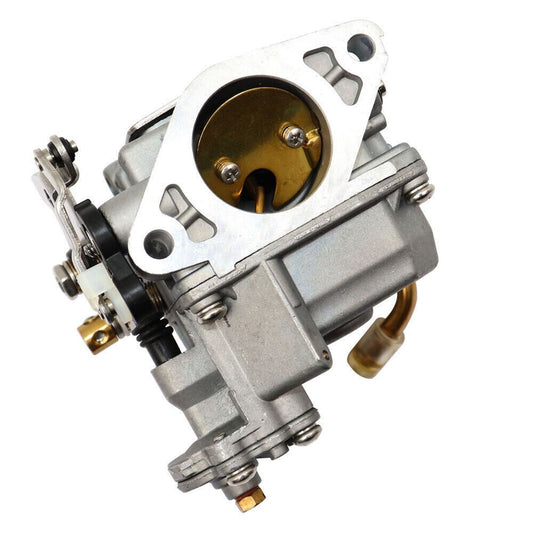
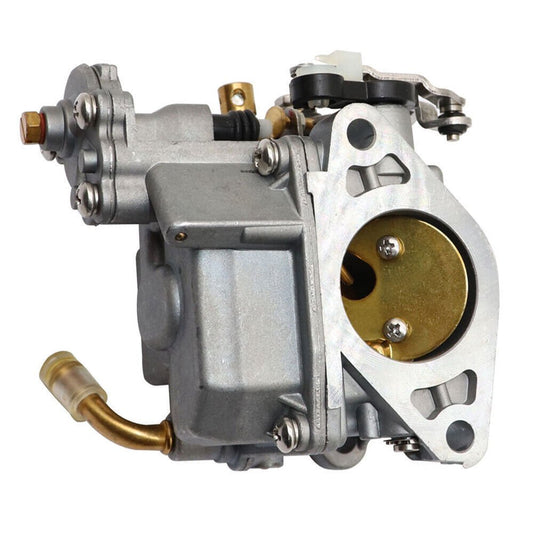
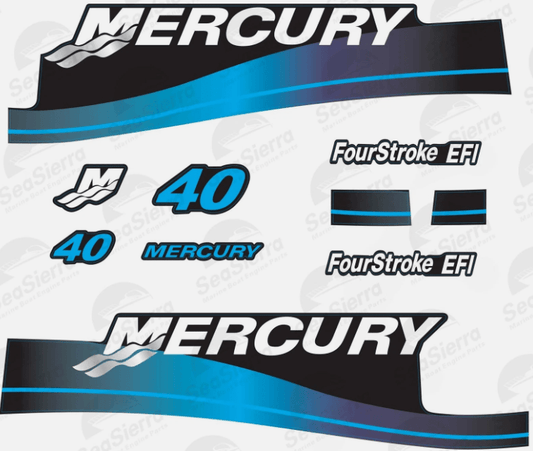

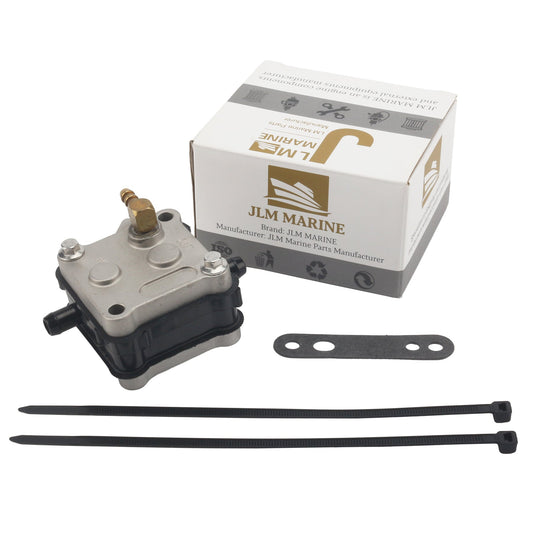
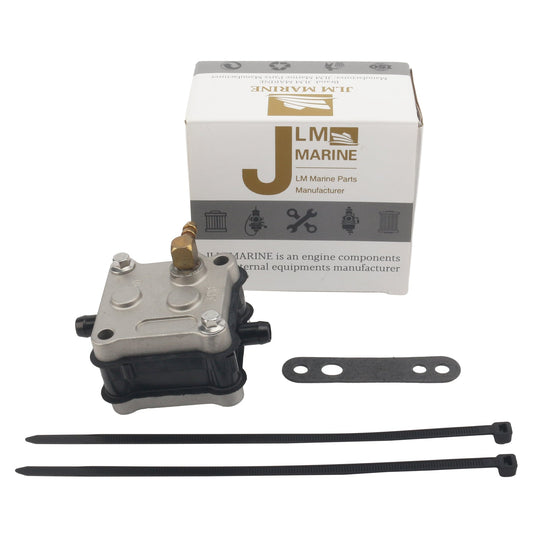
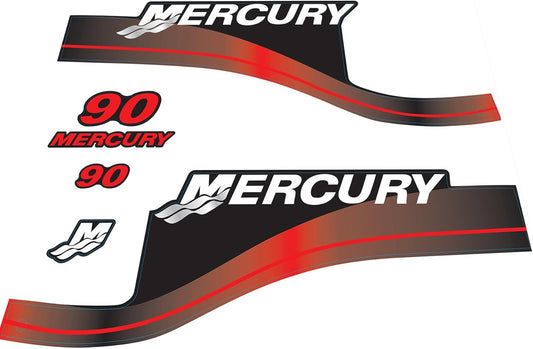

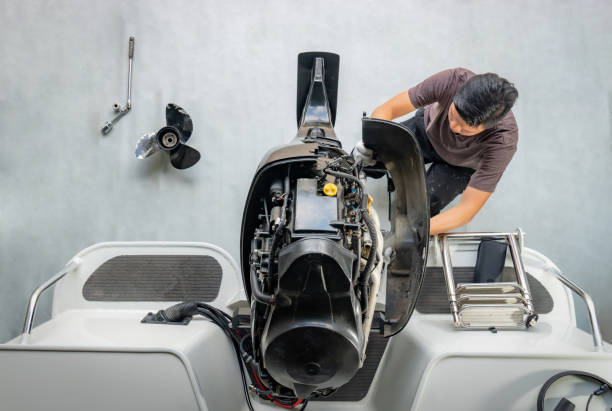



Leave a comment
Please note, comments need to be approved before they are published.